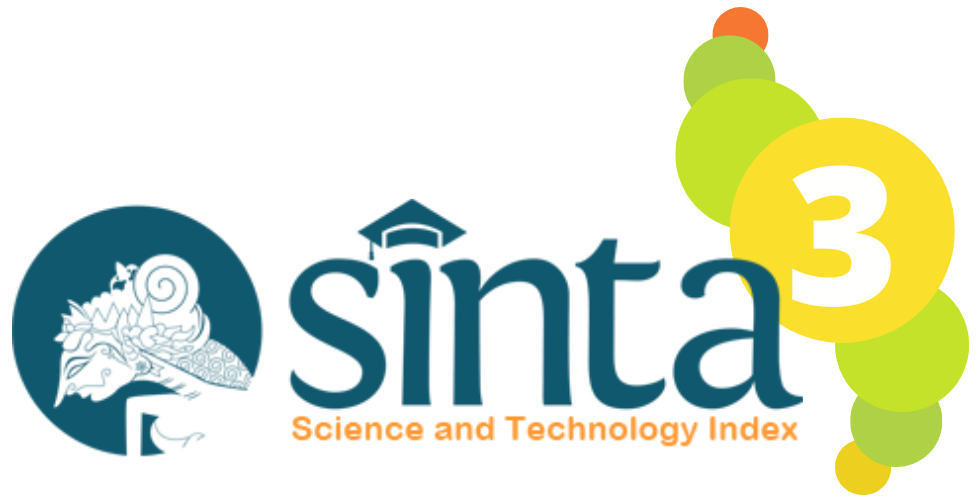PENINGKATAN KOMPETENSI BELAJAR SISTEM TATA SURYA DAN KARAKTERISTIKNYA DENGAN MENGGUNAKAN MODEL PEMBELAJARAN SNOWBALL THROWING PADA SISWA KELAS VIA SDN 1 WONOGIRI SEMESTER 2 TAHUN PELAJARAN 2019/2020
DOI:
https://doi.org/10.32585/dikdasbantara.v3i2.753Abstract
Tujuan Penelitian tindakan kelas ini adalah untuk mengetahui penggunaan model pembelajaran Snowball Throwing yang dapat meningkatkan kualitas proses pembelajaran, kompetensi belajar, dan perubahan perilaku yang menyertai pembelajaran menjelaskan sistem tata surya dan karakteristiknya pada Siswa Kelas VIA SDN 1 Wonogiri Semester 2 Tahun Pelajaran 2019/2020.
Penelitian dilakukan dalam dua siklus dengan prosedur tiap siklus terdiri atas perencanaan, pelaksanaan tindakan dan observasi, dan refleksi. Subjek penelitian adalah siswa kelas VIA SD Negeri 1 Wonogiri berjumlah 31 siswa. Sumber data, yang diambil dari (1) Hasil pengamatan proses pembelajaran siswa, (2) Hasil nilai tes, dan (3) Hasil pengamatan perilaku/sikap siswa. Data hasil observasi proses pembelajaran dianalisis hingga hasilnya dapat mencapai indikator kinerja kategori baik dengan 71 % siswa aktif, antusias dan kondusif dalam mengikuti proses pembelajaran, nilai hasil tes dianalisis dengan cara mendeskripsikan nilai tes antar siklus hingga hasilnya dapat mencapai batas tuntas sesuai dengan indikator kinerja, yakni 1) Minimal nilai tes mencapai KKM yaitu 75, 2) Target ketuntasan klasikal mencapai 80% atau lebih, sedangkan data hasil observasi perilaku/sikap siswa dianalisis hingga hasilnya dapat mencapai indikator kinerja kategori baik dengan 71 % siswa bekerja sama, percaya diri dan tanggung jawab.
Hasil penelitian menunjukkan bahwa melalui pengunaan model pembelajaran Snowball Throwing pada materi menjelaskan sistem tata surya dan karakteristiknya,dapat meningkatkan keaktifan, antusias dan kondusif siswa dalam mengikuti proses pembelajaran dari kondisi prasiklus rata-rata keaktifan, antusias dan kondusif siswa prasiklus 23,65 %, naik menjadi 45,16 % di siklus I, dan meningkat menjadi 78,49 % di siklus II. Hasil belajar KD 3.7 pada prasiklus siswa yang tuntas 12 siswa atau 38,71 %, naik menjadi 20 siswa tuntas atau 64,52 % di siklus I, kemudian meningkat menjadi 26 siswa tuntas atau 83,87 % di siklus II. Hasil observasi perilaku/ sikap siswa bekerja sama, percaya diri dan tanggung jawab pada prasiklus hanya 19,35 %, naik menjadi 41,94 % pada siklus I dan meningkat menjadi 80,65 % di siklus II.
Berdasarkan hasil penelitian dapat disimpulkan bahwa (1) Pengunaan model pembelajaran Snowball Throwing dapat meningkatkan keaktifan, antusias, kondusif siswa dalam proses pembelajaran rata-rata mencapai 78,49%. (2) Pengunaan model pembelajaran Snowball Throwing dapat meningkatkan ketuntasan kompetensi belajar siswa pada materi menjelaskan sistem tata surya dan karakteristiknya mencapai 83,87%. (3) Pengunaan model pembelajaran Snowball Throwing dapat meningkatkan perubahan perilaku/sikap siswa bekerja sama, percaya diri dan tanggung jawab rata-rata mencapai 80,65%.
Downloads
Downloads
Published
Issue
Section
License
The copyright to this article is transferred to Jurnal Dikdas Bantara if and when the article is accepted for publication under Creative Commons Attribution-ShareAlike 4.0 International License. The undersigned hereby transfers any and all rights in and to the paper including without limitation all copyrights to Jurnal Dikdas Bantara. The undersigned hereby represents and warrants that the paper is original and that he/she is the author of the paper, except for material that is clearly identified as to its original source, with permission notices from the copyright owners where required. The undersigned represents that he/she has the power and authority to make and execute this assignment.We declare that:
1. This paper has not been published in the same form elsewhere.
2. It will not be submitted anywhere else for publication prior to acceptance/rejection by this Journal.
3. A copyright permission is obtained for materials published elsewhere and which require this permission for reproduction.
Furthermore, I/We hereby transfer the unlimited rights of publication of the above-mentioned paper in whole to Jurnal Dikdas Bantara. The copyright transfer covers the right to reproduce and distribute the article, including reprints, translations, photographic reproductions, microform, electronic form (offline, online), or any other reproductions of similar nature. The corresponding author signs for and accepts responsibility for releasing this material on behalf of any and all co-authors. After submission of this agreement signed by the corresponding author, changes of authorship or in the order of the authors listed will not be accepted.
Retained Rights/Terms and Conditions
1. Authors retain all proprietary rights in any process, procedure, or article of manufacture described in the work.
2. Authors may reproduce or authorize others to reproduce the work or derivative works for the author’s personal use or for company use, provided that the source and the Jurnal Dikdas Bantara copyright notice are indicated, the copies are not used in any way that implies Jurnal Dikdas Bantara endorsement of a product or service of any employer, and the copies themselves are not offered for sale.
3. Although authors are permitted to re-use all or portions of the work in other works, this does not include granting third-party requests for reprinting, republishing, or other types of re-use.



















